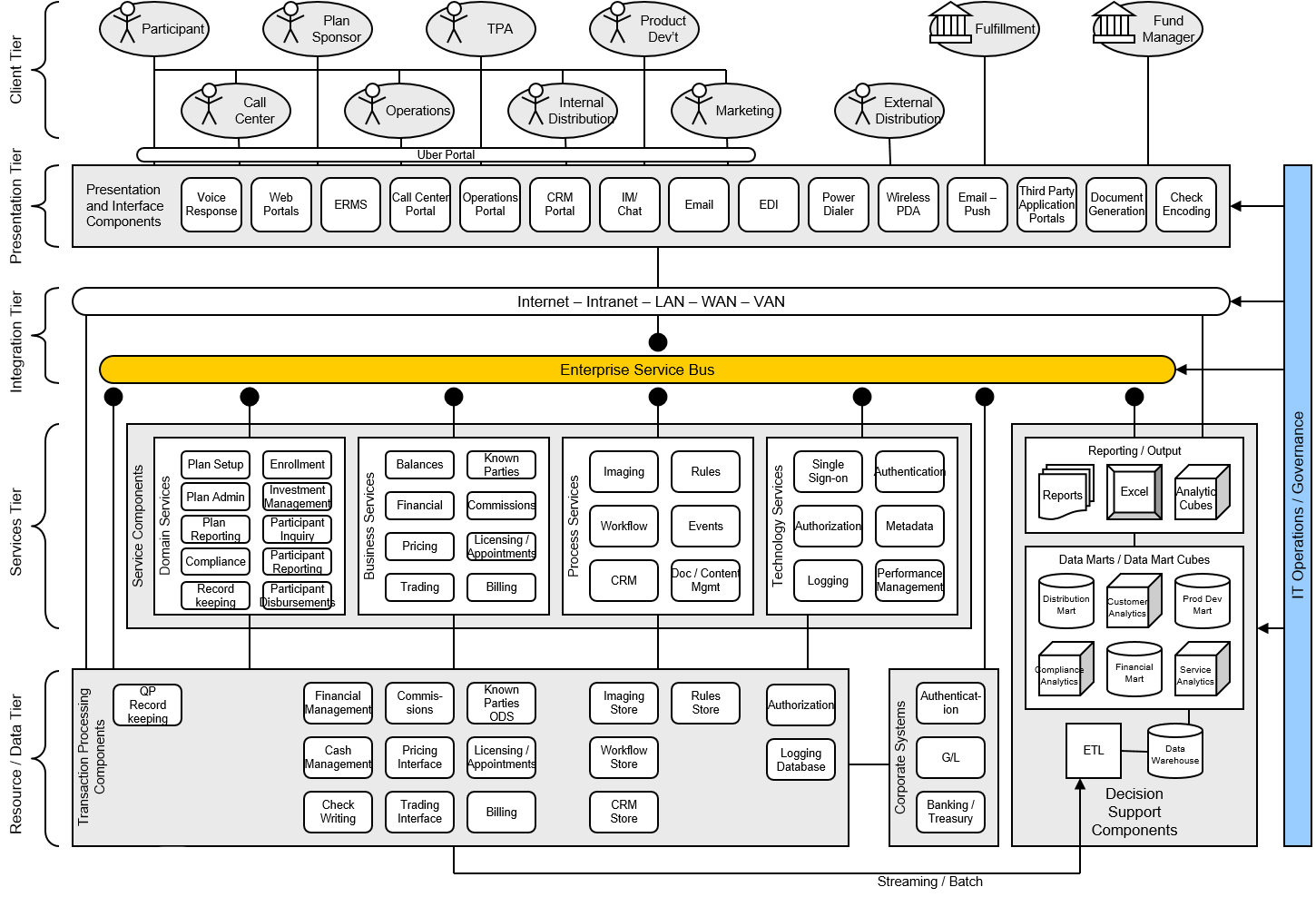Client
A major US Insurer
The Opportunity
This insurer was embarked on a company-wide initiative to increase services focused on the profitable retirement business sector.

The Challenge
Concerned that legacy technology would be a limiting factor they needed to assess the current and future state of systems supporting these growth-oriented lines of business.
Our Role
Developed a comprehensive technology strategy and road map for systems supporting retirement products, that encompassed:
-
Current State Scalability Assessment – of the extent to which the existing technology environment could scale to support the growth projections
-
Business Common Requirements Vision – documented as a set of common and cohesive enterprise-level requirements to achieve the business strategy, linking business requirements to core implications for the future state technology architecture
-
Conceptual Architecture – including the key layers and the general functionality to be provided within each layer of the architecture “stack”, and tying each layer back to business and IT implications
-
Conceptual Future State – which defined the proposed architecture at the next level of granularity, decomposed the conceptual framework into individual technology components, and documented the functionality to be delivered by each component in the proposed future state
-
Options and Implications – including analysis of specific technology options for each component in the proposed future state, capturing trade-offs associated with harvesting existing systems versus buying or building new capabilities to meet the functionality required in the future state
-
Future State Architecture – which presented the future state architecture in terms of specific recommended applications or systems, identifying each application, the expected users, the proposed functionality, implications, and next steps
-
Recommendations — summarizing the results of the technology strategy, including key initiatives, benefits, costs, and critical success factors to achieve the future state architecture
Bottom Line
Armed with a clear blueprint for the future, the retirement services division was able to secure funding for the proposed architecture to support its growth objectives.

